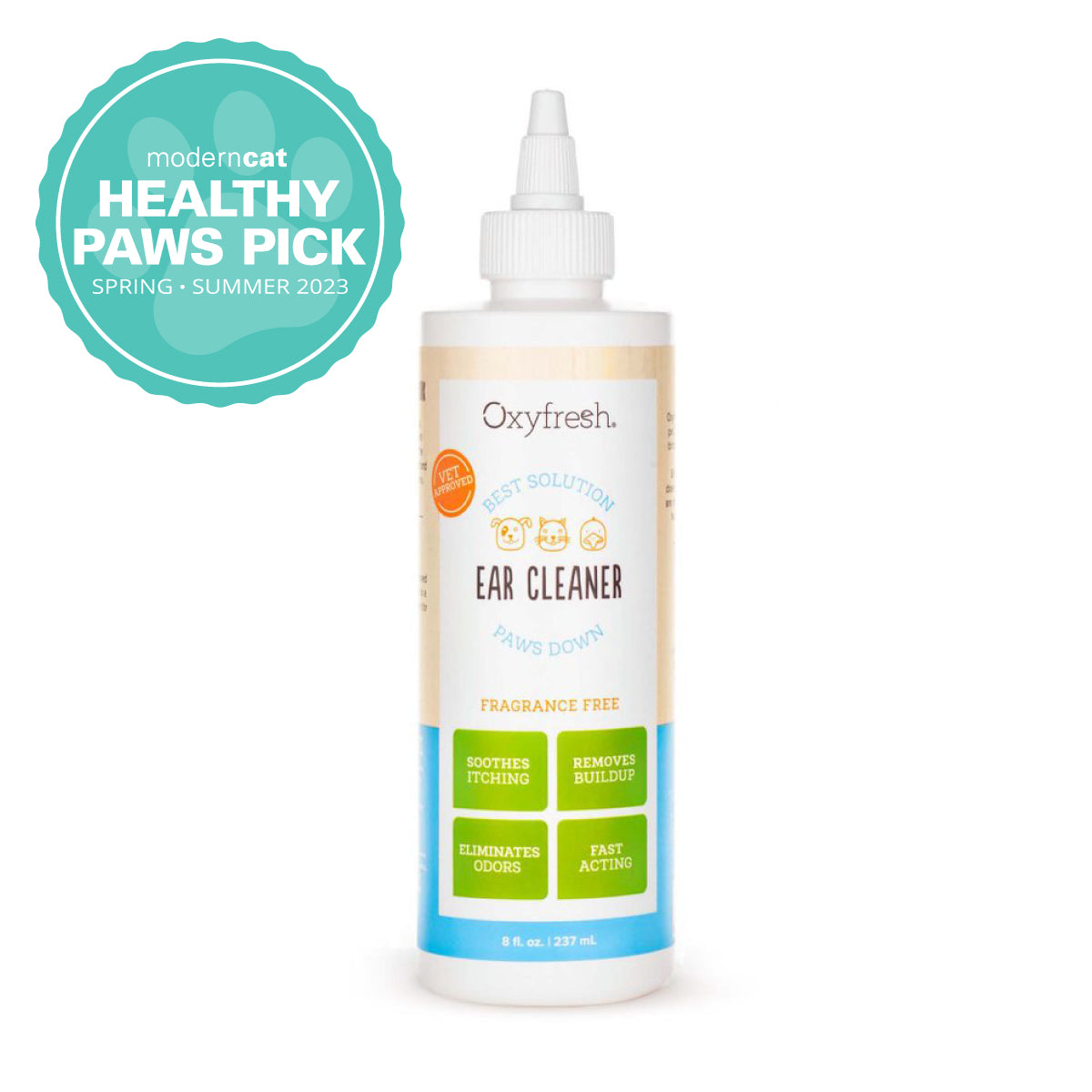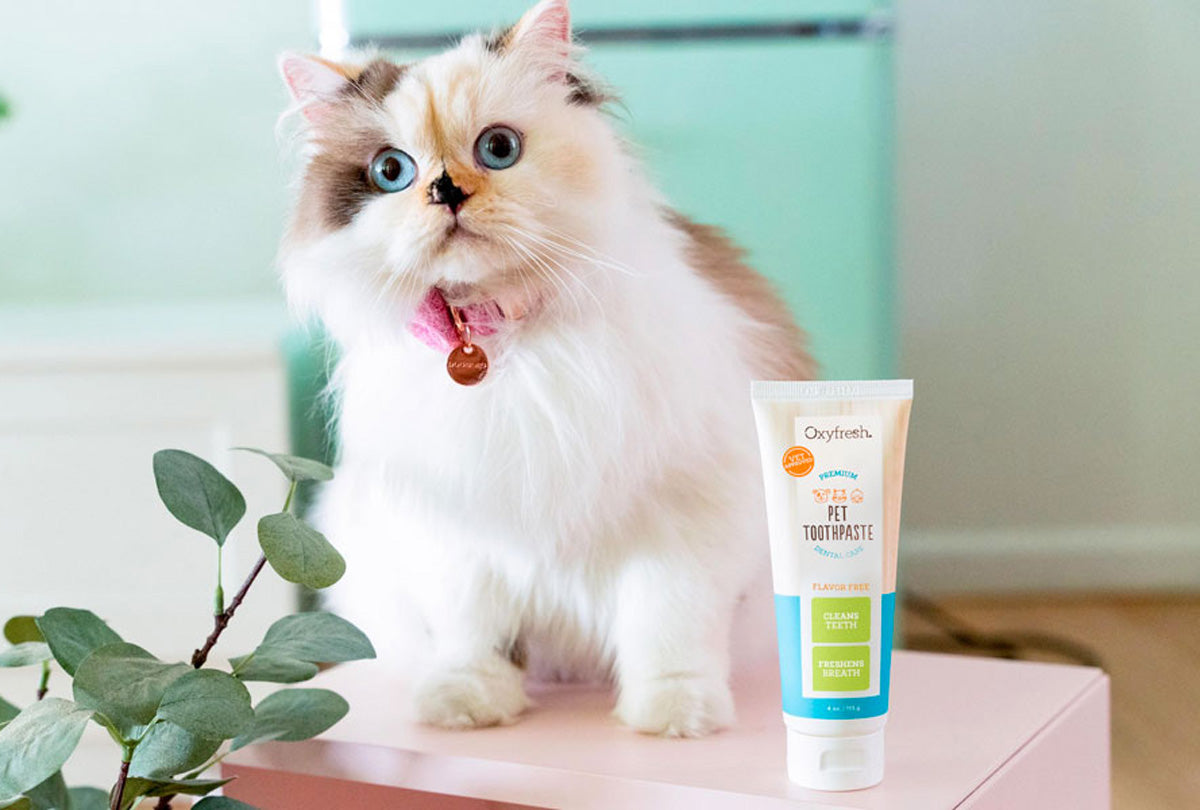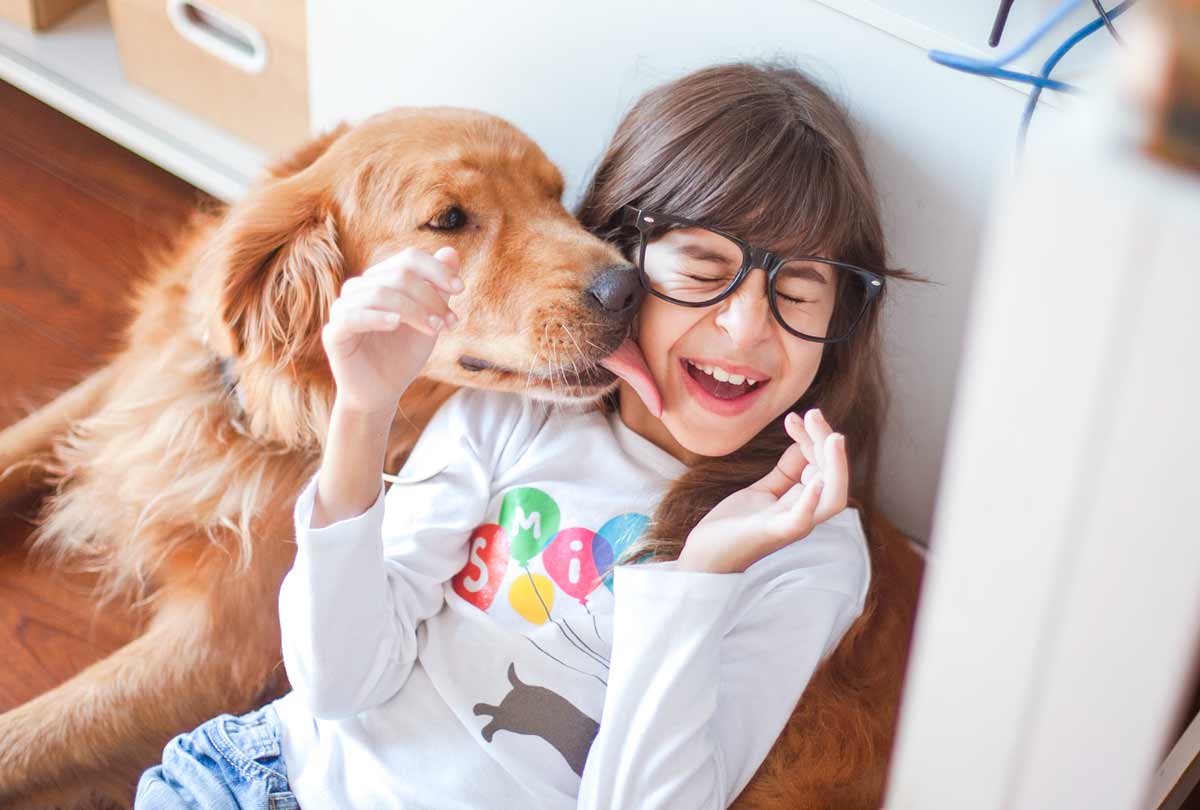Itching, scratching and head shaking, oh my! If you notice your pooch having problems with his ears, you’re not alone. Dog ear infections are extremely common, affecting 1 in 5 dogs. And for pups who live in humid climates, that number jumps up to 1 in 2!
Give your furry bestie the relief they need by getting in the know about the causes of dog ear infections, the main symptoms to watch out for, and most importantly, how to treat a dog ear infection.

What Causes Dog Ear Infections?
The reason dogs often get ear infections comes down to simple biology.

Unlike a human ear, which has a straight, horizontal path to the eardrum, dogs’ ears are L-shaped. This shape holds in moisture and allows very little airflow, making the ears an ideal spot for bacteria and yeast (the culprits behind dog ear infections) to multiply out of control.
Dogs with floppy ears, like Basset Hounds, Cocker Spaniels and Labradoodles are more prone to ear infections because it’s easier for moisture and debris to become trapped in their ears.
Dogs of all breeds that love the water are also at risk. Despite that vigorous head shaking, it can be hard for them to dislodge water from their ears. Even just a little bit of puddle splashing, sprinkler play or bathing can be the catalyst for a dog ear infection, which is why keeping their ears dry is so important.
Excessive ear wax, foreign objects in the ear (e.g. blade of grass), over-cleaning of the ear, trauma to the ear, or underlying health conditions can also lead to infection.
What to know about brown discharge & dog ear infections
If you notice dark, crumbly brown discharge in your dog’s ear, reminiscent of coffee grounds, this is a sign of pet ear mites. These highly transmissible parasites are most often found in puppies or dogs that were adopted from shelters. The mess ear mites bring to a dog’s ear can easily lead to an ear infection. Ear mites require prompt treatment, and if one pet in the home has mites, they’ll ALL need treatment.
Dog's Ear Stinks: Can You Smell a Dog Ear Infection?
The things we do for our dogs, right? This won’t be high on your list of "fun ways to bond with my dog," but it’s important to smell your dog’s ears if you suspect a dog ear infection. (And get in the habit of smelling them on a regular basis, like once a week, so you can ward off a potential infection.)
A healthy dog ear really shouldn’t have much odor at all. The exception is if your dog’s ears have an abundance of ear wax. This will cause an ear odor, though not as strong and nasty as the odor caused by an ear infection.
If your dog’s ears stink like yeast (beer, bread dough, etc.), it’s likely a dog ear yeast infection. Dog ear infections caused by bacteria will also emit an unpleasant odor, ranging from a sweet smell like caramel to a rancid smell like rotting poultry. You may even notice your dog’s ears stink like cheese. (Um, guess we’re NOT having a grilled cheese for lunch.)
Signs of a Dog Ear Infection
Could Allergies Be Causing Your Dog's Recurrent Ear Infections?
Dogs that have allergies, whether from environmental allergens (dust mites, molds, pollens, etc.) or food allergies, are predisposed to recurrent ear infections, much to the frustration of their pet parents.
Now, before you groan at the thought of keeping a food journal for your dog or taking them in for testing, know that true food allergies are very rare, affecting only 0.2% of dogs, according to an allergy report by Banfield Pet Hospital.

However, environmental allergies are on the rise in dogs (over 30% increase in the past decade), so if you notice your dog getting ear infections only at certain times of the year during peak allergy season, talk to your vet about the best course of action. They may advise allergy pills for your dog, which can help relieve symptoms quite a bit. (Make sure you give medication only under the advice of your vet.) There are also things you can do at home to help your pet get relief from allergies and lessen the chance of an ear infection, which is a secondary symptom of allergies.

How to help your dog with (achoo!) seasonal allergies

Wipe those paws! Using a damp cloth or towel (we know all you dog parents buy these in bulk like us!), thoroughly wipe your dog's paws off after they’ve been outdoors in order to remove as much pollen as possible. You can also use scent-free, hypoallergenic wipes. If your dog likes to roll around on the grass, you’ll want to wipe down their fur too.

Bath time! Dogs with seasonal allergies require frequent bathing to keep their fur free of allergens. Note: this isn’t the time to share your fave shampoo. Dogs and humans have different pH needs, so you’ll want to use a hypoallergenic, pH-balanced shampoo for dogs so you don’t dry out their skin and make their itching worse!

Show me the honey! To help your dog’s allergies, you’re going to want to go all Pooh Bear on your dog and develop a (healthy) obsession with honey. But not the sweet, processed stuff you can find at any grocery store. Search out local honey. Local honey is usually made from the same pollen that causes seasonal allergies where you live.
The theory is that by eating the honey, your dog will become more accustomed to the pollen, and therefore, less (oh) bothered by allergies. This tip works for humans in the household too! Note: if your dog is diabetic or obese, skip the honey.

Honey guidelines for dogs:
- Small dogs (under 10 lb.): ¼ teaspoon per day
- Medium dogs (10-20 lb.): ½ teaspoon per day
- Larger dogs (20-50 lb.): 1 teaspoon per day
- Extra-large dogs (over 50 lb.): 2 teaspoons per day
Will a Dog Ear Infection Go Away on Its Own?
Unfortunately, the odds of a dog ear infection clearing up on its own are not great. And if you put off treating the ear infection, it can become much worse (and more expensive). Left untreated, an ear infection can cause hearing loss and a spread of the infection to the middle and inner parts of the ear, which can lead to nerve damage, eye ulcers, or vestibular disease, a disorder that affects balance, making dogs feel dizzy and unable to walk a straight line.
Untreated dog ear infections can also lead to aural hematomas, where a collection of fresh or clotted blood collects in the dog’s ear flap, due to all the excessive ear scratching and head shaking. Ear hematomas will make the ear flap look thick and spongy or lumpy. They can affect just one part of the ear or the entire ear flap. Hematomas will likely require surgery and several follow-ups at the vet.
What happens at the vet:

After a thorough ear examination, your veterinarian will clean your dog's ear with a medicated ear cleaner. In severe cases or if the wax is deeply impacted, your dog may need to be sedated. Your vet will likely prescribe an ear cleanser and topical treatment for your dog at home. You may also be given oral antibiotics and anti-inflammatory medications for your dog. Make sure to follow through on all treatments to make sure the ear infection goes away. When you do, your pup should be back to normal in a week or two.
Can You Help a Dog's Ear Infection at Home?
If you can’t get into the vet same-day, you can help give your dog some sweet relief from the itching of an ear infection (itching is more prevalent with a yeast infection in dogs’ ears versus a bacteria-caused ear infection) by using an over-the-counter ear cleaner.
As it soothes, an ear cleaner will clear out excess wax or brown discharge from the dog ear infection, which could keep it from getting worse. (Keep in mind though, if the ear infection is very painful, your dog may not want you anywhere near his ears!)
Pointers: You’ll want to make sure the dog ear cleaner is alcohol-free so it doesn’t sting or burn your pup’s already-tender ear tissue. Another no-no? Fragranced ear cleaners, as they can also cause sting and irritation, making an ear infection worse.
Skip the DIY ear cleaning solutions
Please don’t take ear cleaning into your own hands and whip up a homemade recipe. It won’t be good for your dog (no matter what the internet may say)! DIY ingredients like rubbing alcohol and vinegar can sting to the extreme and irritate your dog’s ears, making the infection worse. Hydrogen peroxide should also be avoided because of how it bubbles up in the ear, totally freaking dogs out!
How to Prevent Future Ear Infections in Dogs

If your dog has allergies, getting those under control are key to preventing future ear infections. For dogs who don’t have allergies, your best strategy is to keep your dog’s ears clean and dry. Too much moisture and ear wax can lead to both dog ear yeast infections as well as bacterial ear infections.
Ask your vet for recommendations on how often to clean your dog’s ears. Many dogs will need once-a-month cleanings, and some dogs will need once-a-week cleanings if they’re a floppy-eared breed or tend to get a lot of earwax. The most important thing is to use an ear cleaner that’s gentle and fast-acting and won’t create excess moisture in your dog’s ear.
Treat Your Dog's Ears to the Best: Oxyfresh Pet Ear Cleaner

Protect the health of your dog’s ears (and your wallet) with the ear cleaner named a 2022 Healthy Paws pick by Modern Dog Magazine: Oxyfresh Pet Ear Cleaner. This gentle, hypoallergenic dog ear cleaner quickly soothes itching and irritation without the burn of alcohol or peroxides. And that stinky brown stuff in your dog’s ears? Yeah, it gets rid of that too!
- Immediate relief: proprietary Oxygene® formula instantly soothes itching & eliminates stinky dog ear odors
- Fresh, clean ears: Gentle plant-based surfactants quickly power through ear wax, dirt & mite debris
- Hypoallergenic formula: no bubbling peroxides, burning alcohol, irritating parabens, or oily residue left behind
- It works: Trusted by thousands of dog parents, this veterinarian-approved ear cleaner is USA made with only the highest quality ingredients
















